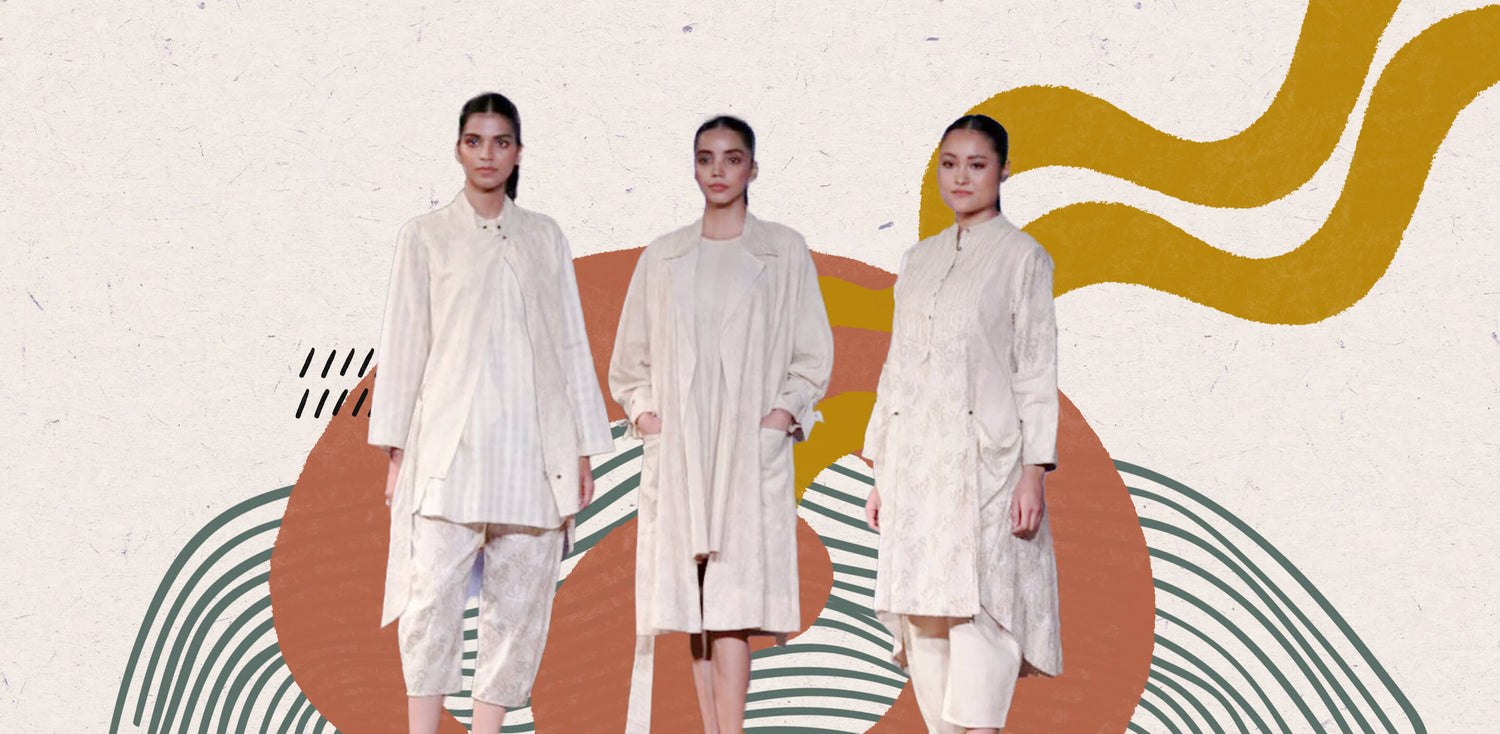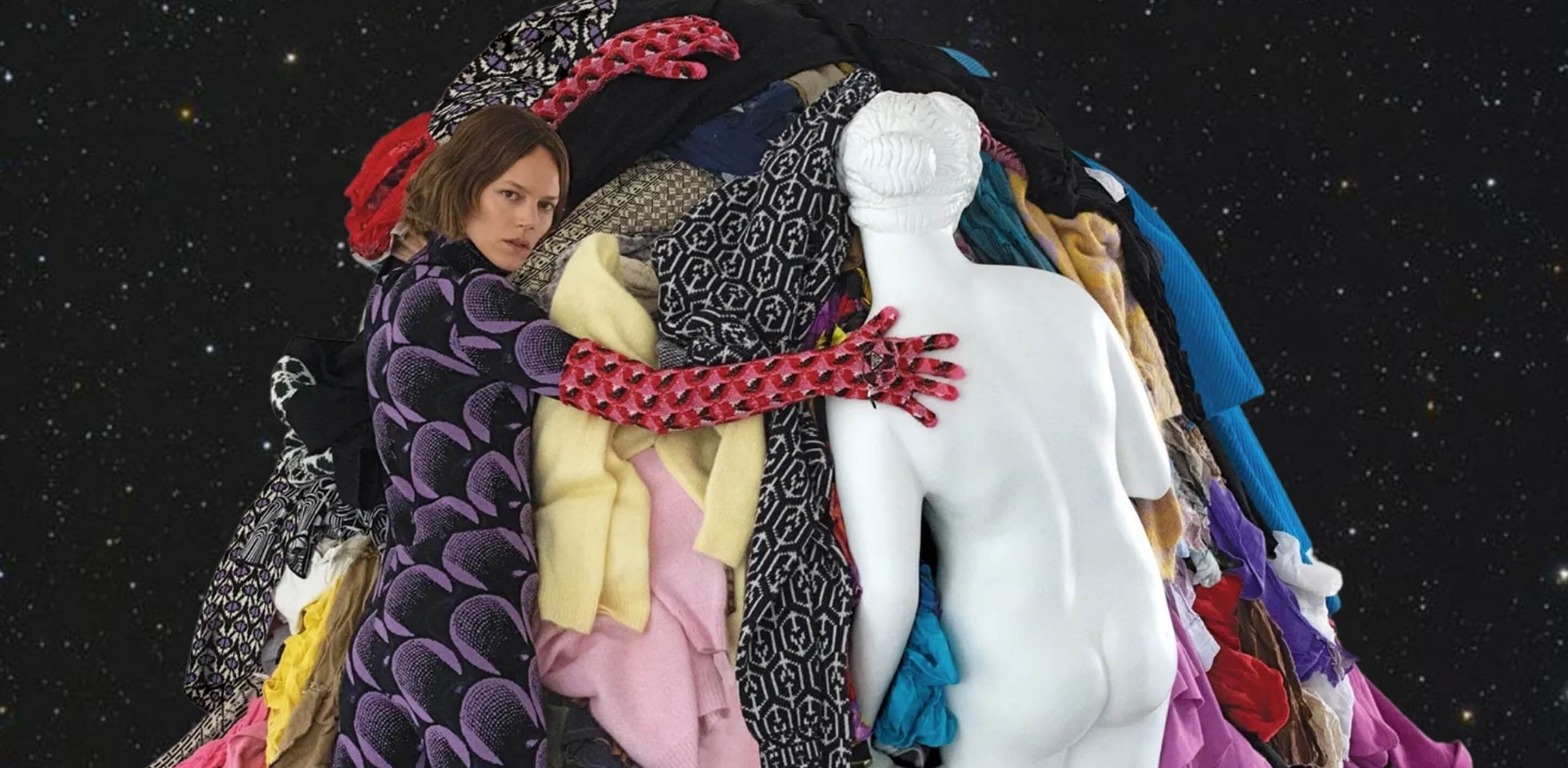On paper, the two fabrics don't seem to go together: one is often used for casual trousers and jackets, while the other is more commonly associated with formal kurtas and sombre Nehru collars. Khadi denim, however, triumphs over that same contradiction. The very name for this kind of denim, "Khadi denim," is laden with ambiguity. Despite both being made of woven cotton, khadi is manufactured by experienced hands whereas denim relies heavily on mechanisation. Denim, a symbol of the American working class, and Khadi, a symbol of the independence of the average Indian, both have utilitarian roots, but although Khadi still struggles with its image, denim has become more widely accepted.

The intriguing combination of the two textiles was first launched about a decade ago, spurred by the need for innovation to emphasise the modern importance of Khadi. But there were difficulties along the way. "This cloth is above the skill of most fabric manufacturers. Although our Indian textiles are known for their twill fabrics, the denim structure required a loom redesign to accommodate the heavier yarns. Adding a weft to indigo warp yarn is a more involved process. The key is in the structure."
The fabric has evolved over time to address these concerns while also presenting as a novel and exciting development, combining the long-lasting associations with denim with the slow and eco-friendly connotations of khadi. How is khadi denim fitting into today's fashion trends over a decade after its introduction?
The Creative Appeal

The novelty has piqued the interest of architects. Khadi denim particularly piques my interest since, unlike other textiles, denim is making the reverse transition, from factories to handloom.
Hybrid denim’s slow fashion aesthetic makes it a natural discussion starter about the intersection between the fashion industry and climate change. Sustainability is a major focus for Indian designers, who are striving for authentic approaches to the topic. Being a break from the denim industry, which is notoriously unsustainable because of the acid washing and stone washing processes involved. With this, you may take a different approach than the herd.
Some really novel products have resulted from this. The Summer House's zero-dye Khadi denim jeans, for instance, bring "farm to fashion" to a new level. The handloom khadi denim jeans Karu wears are embellished with embroidered panels and reflective metalwork. Khadi denim is a specialty of the Indian designer, and he often uses non-chemical colours in his creations.
Khadi denim is just as multipurpose as regular denim, so there's no need to wait for new possibilities in streetwear. Khadi denim is quite versatile, since its thickness may be adjusted. It's possible to tear or shred it, but I doubt any designer would do so out of respect for the work that went into it.
Commercial Appeal

As much as its origin is at odds with Khadi, so is the visual vocabulary linked with it. Khadi is a fabric that was supported by Mahatma Gandhi in his fight for economic independence from British control, and as a result is cherished for this reason. However, it is not generally seen as a fashionable alternative. It's a shame that khadi isn't automatically associated with high-end fashion, since what else could luxury be than handloom?
Surely anything that has been painstakingly crafted one thread at a time, one weave at a time must be sumptuous. Premium brands often include prominent designers. Unfortunately, just a tiny fraction of consumers buy from designers.
People tend to choose the cheaper, mass-produced denim from a high street brand over the higher quality, independently made Khadi denim. As a result of colonial preferences or the reinforcement of western standards, many people have a hard time seeing inside their own culture and seeing why a higher price is justified. You should know that Khadi denim is pricey because of factors like placement and affordability.
The absence of context also weakens the fabric. Getting people to really see Khadi denim is the most effective method of selling it. Digital sales are hindered by the fact that customers have no way of knowing what Khadi denim really feels like, unlike other materials. The greatest strategy for promoting this fabric is to provide customers chances to try it out.

Although Khadi denim has done well since its inception, it might go even farther with the help of some design work and some customer education. Denim's current cool, youthful reputation has been built up over decades, therefore promoting Khadi denim will need twice as much work. It's labour intensive, but once people purchase and wear it, they understand the allure.
FAQ
Where do I get to buy Khadi denims in India?
Khadi denim has become a part of modern textile. From famous designers to online sites, you can find this fabric everywhere with different patterns and designs. You can also customise as per your choice.
What is the concept of Khadi Denim and how is it different from regular Denim?
Khadi denim is a more eco-friendly option than traditional denim. To manufacture Khadi denim, natural fibres are hand spun into yarns, and the resulting fabric is handwoven on a traditional loom. Due to the fact that it is performed manually, no resources, such as power or fuel, are used. Regular denim is mostly spun with machines and lots of energy required to produce it.
What do you know about Fabrication of hybrid composite?
To create the composite material, a hand layup technique is used. The top and bottom of the specimen are constructed from GFRP, while the in-between spaces are filled with natural fibres. Each new layer requires a fresh batch of the resin/hardener combination (1:2). At first, the fibres are sun-dried to get rid of excess moisture.
Moulds are prepped by cleaning and then treated with a releasing agent (Poly Vinyl Alcohol). When the woven roving (GFRP) is filled to capacity with epoxy resin, the air bubbles are rolled out and the mixture is dispersed evenly. Banana fibres and jute fibres have been placed in an alternating horizontal and vertical pattern.
We also happen to be a magnet for suggestions, and would love to catch yours….throw us yours on hello@fabriclore.com




